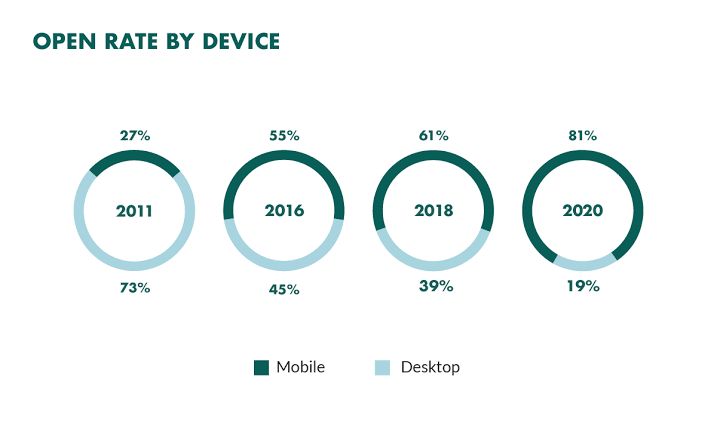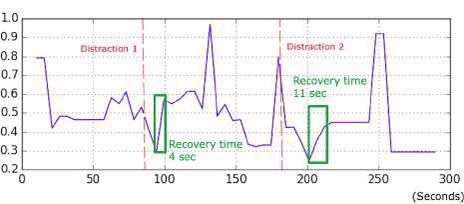
Table of Contents
Toggle10 Email Marketing Metrics You Should Be Tracking and Why
Email marketing remains one of the most effective ways to reach your audience and drive results. However, simply sending out emails isn’t enough. To truly understand how your email campaigns are performing, you need to track specific metrics. Here’s a straightforward guide to the 10 essential email marketing metrics you should be monitoring and why they matter.
1. Open Rate: The First Indicator of Engagement
Open rate measures how many people are opening your emails. It is calculated by dividing the number of opens by the number of delivered emails. For example, if you sent 100 emails and 20 were opened, your open rate would be 20%.
Why it matters: A high open rate indicates that your subject lines are compelling and that your audience is interested in your emails. If your open rate is low, it might be time to reconsider your subject lines or ensure your emails are reaching the right people.

2. Click-Through Rate (CTR): Measuring Engagement
Click-through rate measures the percentage of recipients who clicked on links within your email. For instance, if you sent 100 emails and 10 people clicked a link, your CTR would be 10%.
Why it matters: A high CTR suggests that your email content is engaging and prompts recipients to take action. It’s a clear indicator of how well your email generates interest and interaction.
You Can Book
3. Conversion Rate: The Ultimate Goal
Conversion rate tracks how many recipients completed a desired action, such as making a purchase or signing up for a webinar, after clicking through your email. If 100 people clicked a link and 5 made a purchase, your conversion rate would be 5%.
Why it matters: This metric shows whether your email’s call to action is effective. It helps you understand how well your email drives actual results like sales or sign-ups.
4. Bounce Rate: Avoiding the Trash
Bounce rate refers to the percentage of emails that couldn’t be delivered to the recipient’s inbox. There are two types: soft bounces (temporary issues, like a full inbox) and hard bounces (permanent issues, like an invalid email address).
Why it matters: A high bounce rate can indicate problems with the quality of your email list. Regularly cleaning your list and removing invalid addresses can help improve this metric.
5. Unsubscribe Rate: Gauging Content Relevance
Unsubscribe rate measures the percentage of recipients who opted out of receiving your emails. If you sent 1,000 emails and 10 people unsubscribed, your unsubscribe rate would be 1%.
Why it matters: While a small number of unsubscribes is normal, a high rate can signal issues with your email content or frequency. Monitoring this metric helps you adjust your strategy to keep your audience engaged.
6. List Growth Rate: Expanding Your Reach
List growth rate tracks how quickly your email list is growing. It is calculated by comparing the number of new subscribers to the number of unsubscribes and bounces over a specific period.
Why it matters: A healthy list growth rate means you’re successfully attracting new subscribers while managing existing ones. It’s essential for sustaining and expanding your email marketing efforts.
7. Forwarding Rate: How Often Your Email Gets Shared
Forwarding rate measures how often your email is shared with others. If 5 out of 100 recipients forwarded your email, your forwarding rate would be 5%.
Why it matters: This metric indicates that your content is valuable enough for recipients to share with others. A high forwarding rate can help increase your reach and attract new subscribers.
8. Revenue Per Email: Evaluating Financial Impact
Revenue per email calculates how much revenue each email generates on average. If you earned $500 from 1,000 emails sent, your revenue per email would be $0.50.
Why it matters: This metric helps you assess the financial effectiveness of your email campaigns. Tracking it can help you optimize your strategies for better return on investment.
9. Engagement Over Time: Analyzing Trends
Engagement over time tracks how recipient interaction changes over days, weeks, or months. This can be seen in metrics like open rate and click-through rate over different periods.
Why it matters: Analyzing engagement trends helps you identify patterns, such as optimal send times or content types that resonate best with your audience.

10. Spam Complaint Rate: Maintaining Your Reputation
Spam complaint rate measures how often recipients mark your email as spam. If 2 out of 1,000 recipients report your email as spam, your complaint rate is 0.2%.
Why it matters: A high spam complaint rate can hurt your email deliverability and sender reputation. It’s crucial to ensure your content is relevant and that you’re following best practices to avoid being flagged as spam.
Conclusion
Tracking these email marketing metrics provides valuable insights into how well your campaigns are performing. By understanding and analyzing open rates, click-through rates, conversion rates, and more, you can make informed decisions to enhance your email marketing strategy. Stay focused on these metrics, and you’ll be well on your way to creating more effective and engaging email campaigns.
Total Money Makeover: Classic Edition
FAQs About Email Marketing Metrics
1.What are email marketing metrics?
Email marketing metrics are measurements that help you understand how well your emails are performing. They show you how many people opened your email, clicked on links, or took other actions.
2.What are the best email marketing metrics for tracking?
The best email marketing metrics to track include:
- Open Rate: How many people opened your email.
- Click-Through Rate (CTR): How many people clicked on links in your email.
- Conversion Rate: How many people completed a desired action (like buying something) after clicking a link.
- Bounce Rate: How many emails couldn’t be delivered.
- Unsubscribe Rate: How many people chose to stop receiving your emails.
3.Which is the most important metric to track in email marketing?
The most important metric is often the Conversion rate. This tells you how many people did what you wanted them to do after receiving your email, like making a purchase or signing up for a service.
4.Which of the following metrics is used for tracking the status of email marketing?
Open rate is commonly used to track the status of your email marketing. It shows you how many recipients opened your email, helping you gauge the effectiveness of your subject lines and overall email appeal.
5.What are tracking metrics?
Tracking metrics are measurements that help you see how well your email marketing efforts are working. They show you data like how many people are opening your emails, clicking on links, or unsubscribing. This information helps you improve your email campaigns.


